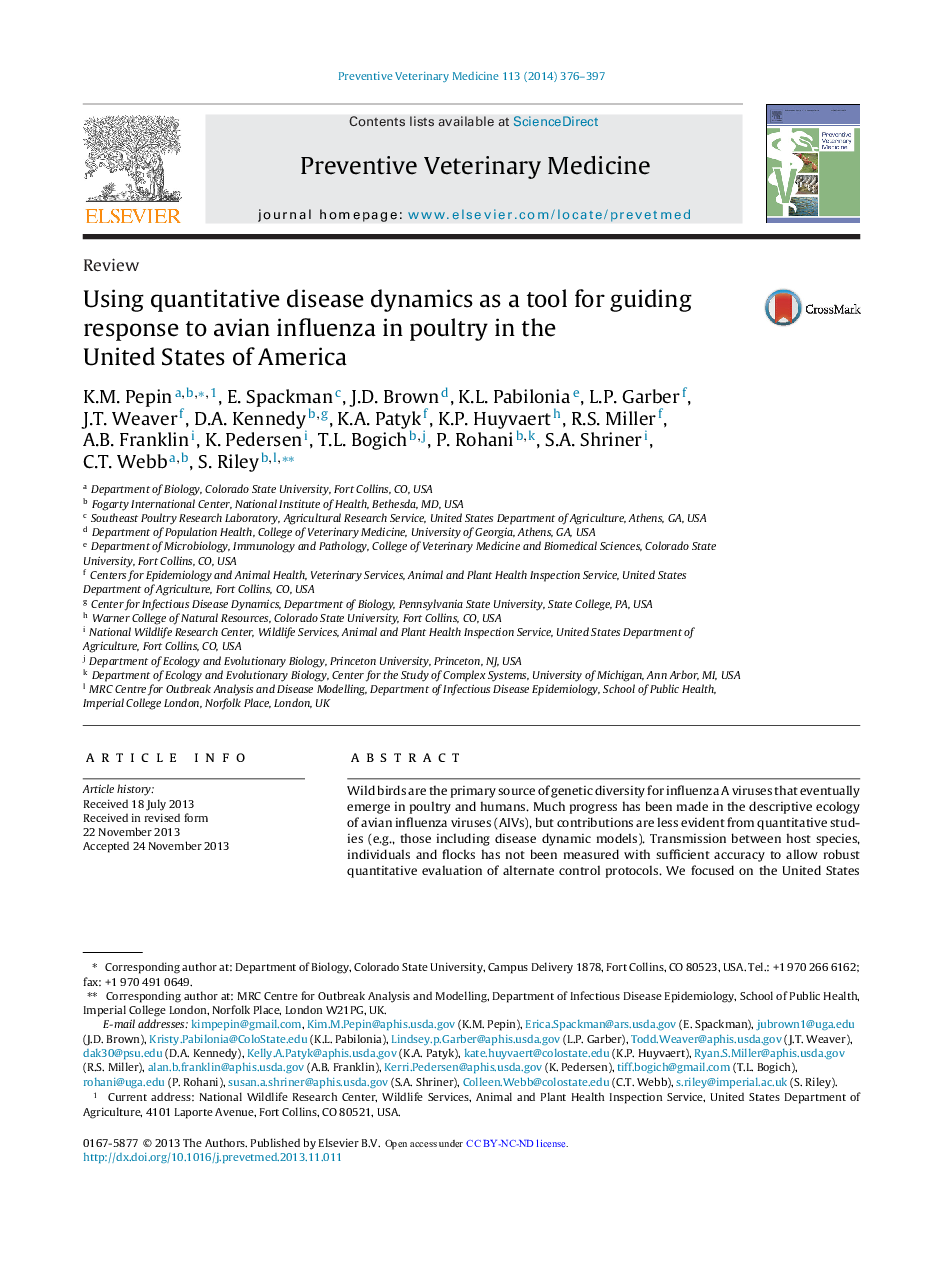| Article ID | Journal | Published Year | Pages | File Type |
|---|---|---|---|---|
| 5793674 | Preventive Veterinary Medicine | 2014 | 22 Pages |
Wild birds are the primary source of genetic diversity for influenza A viruses that eventually emerge in poultry and humans. Much progress has been made in the descriptive ecology of avian influenza viruses (AIVs), but contributions are less evident from quantitative studies (e.g., those including disease dynamic models). Transmission between host species, individuals and flocks has not been measured with sufficient accuracy to allow robust quantitative evaluation of alternate control protocols. We focused on the United States of America (USA) as a case study for determining the state of our quantitative knowledge of potential AIV emergence processes from wild hosts to poultry. We identified priorities for quantitative research that would build on existing tools for responding to AIV in poultry and concluded that the following knowledge gaps can be addressed with current empirical data: (1) quantification of the spatio-temporal relationships between AIV prevalence in wild hosts and poultry populations, (2) understanding how the structure of different poultry sectors impacts within-flock transmission, (3) determining mechanisms and rates of between-farm spread, and (4) validating current policy-decision tools with data. The modeling studies we recommend will improve our mechanistic understanding of potential AIV transmission patterns in USA poultry, leading to improved measures of accuracy and reduced uncertainty when evaluating alternative control strategies.
